TV work For The device with the largest screen in the whole house, not only is it a window for us to entertain and understand the world, it is also a device that connects and controls the whole house terminal.
Sony, one of the world’s largest TV manufacturers, is also gradually changing in this intelligent age. Although what we heard from Sony in the previous experience is “picture quality”, in fact, Sony TVs are becoming more intelligent.
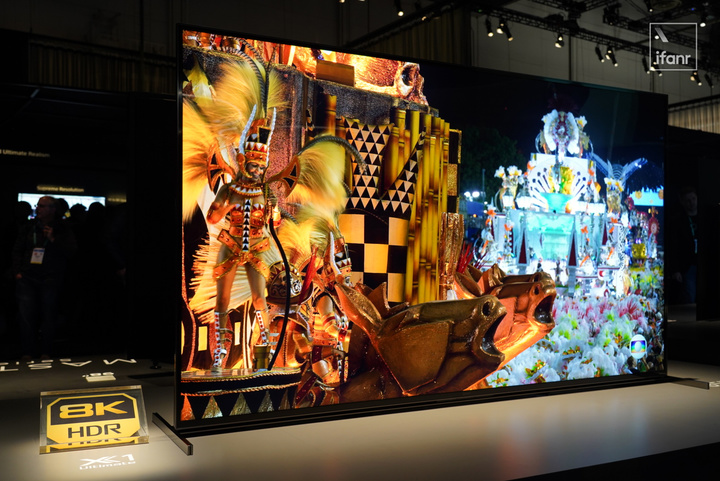
After this year’s CES show, I interviewed four Sony TV executives:
Representative Director and President of Sony Home Entertainment and Audio Products, Senior Executive Vice President of Sony Group Ichiro Takagi ; Sony ( Takahashi Takahashi, Chairman and President of China) Co., Ltd. and Senior Vice President of Sony Group ; Xie Yan, President, Consumer Electronics Business Division, Sony (China) Co., Ltd. ; Sony (China) Co., Ltd., Vice President of Consumer Electronics Business Division, Mr. Kimura .
In this 60-minute group visit, we talked about the development of Sony TV over the past year and Future product layout.
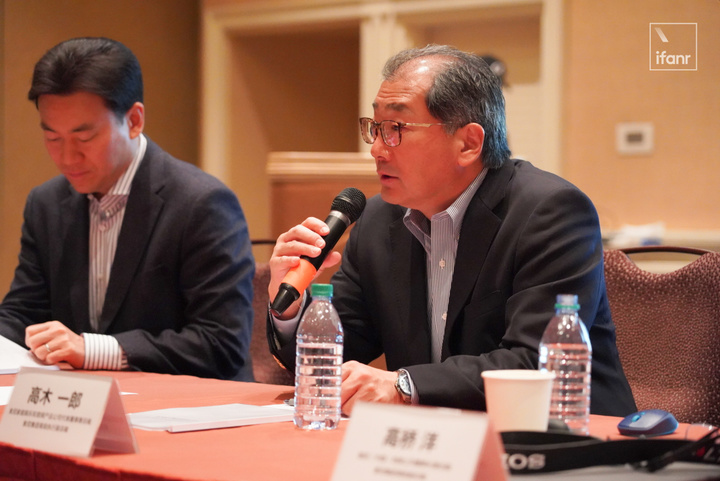
▲ Takagi Ichiro
Introduced four new products based on four concepts < / h3>
Before the interview, Ichiro Takagi showed us a set of data, respectively, Sony ’s OLED in China last year TV market and 75-inch TV market share.
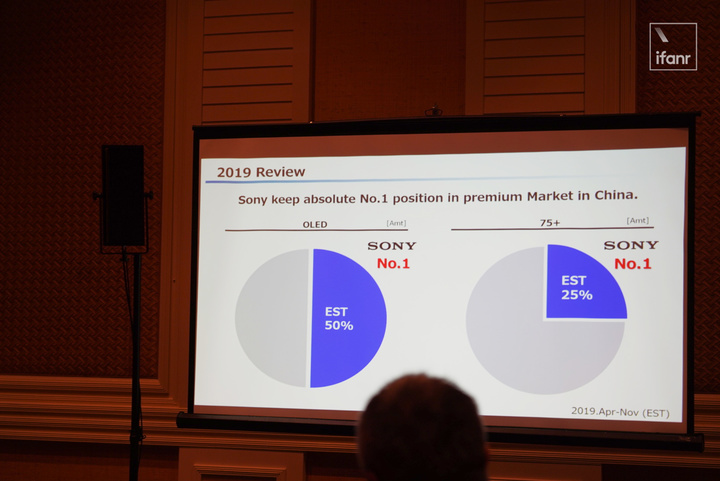
At present, Sony in the Chinese market mainly uses two products, A9G and A8G, as the main force of OLED TVs. Both TVs have given Sony a 50% market share in the Chinese market. And in the proportion of 75-inch products, Sony also reached 25%, ranking first in the market, so Takagi Ichiro has repeatedly mentioned in the interview that he will maintain a large-screen product strategy in the Chinese market .
So we can see that the Z8H launched this year started at 75 inches, which is actually considering the Chinese market demand .
The big screen and high-end product strategy we have implemented in the Chinese market has been very successful, We will work to maintain this momentum next year.
Although both the Internet and the electronics manufacturing industry experienced market sales setbacks last year, under this market share, Sony TV sales are still ahead.
When asked about the sales situation, Takagi Ichiro did not release specific data, but used a sentence to summarize Sales last year:
It (sales) exceeded our expectations.
When it comes to product strategy by 2020, Takagi Ichiro showed us Sony TV This year’s product philosophy.
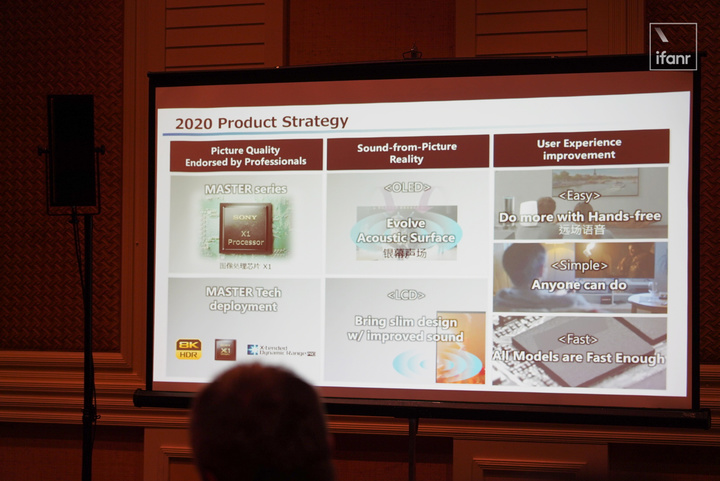
First of all, in terms of picture quality, Sony will continue to maintain it high-end, big screen route, based on this concept, Sony will use panel technology and decoding technology to maintain a better picture Qualitative performance.
This is followed by sound technology for OLED and LED TVs. In addition to the screen sound field previously applied to OLED TVs, this year Sony also adopted border generation technology on LED TVs. This technology can make TV sound field performance more three-dimensional and enhance the cinematic presence. At the same time, LED TVs have become slimmer.
Finally, in terms of user interaction, it is divided into three parts: easy to use, easy to use, and faster. , Users can avoid the trouble of using remote control through voice control; TV operation has become easier to use; product operation response has become faster.
Based on these ideas, we will launch 4 new series of products.
AI and IoT for Sony TV
In previous interviews, Sony didn’t mention much about AI and IoT, and emphasized more The picture quality and sound quality of the product. However, in this interview, Sony introduced us to the new direction of AI application on TV and later connection with other Sony products.

On the one hand Sony focuses on how to use AI technology to improve the best paintings quality. On the other hand, Sony needs to use the Android system as the foundation and continue to use AI to promote the intelligence of TVs.
For Takagi Ichiro, the next thing for Sony TV to do is to deal with Sony ’s own huge equipment The system is connected to realize the ecological combination of One Sony.
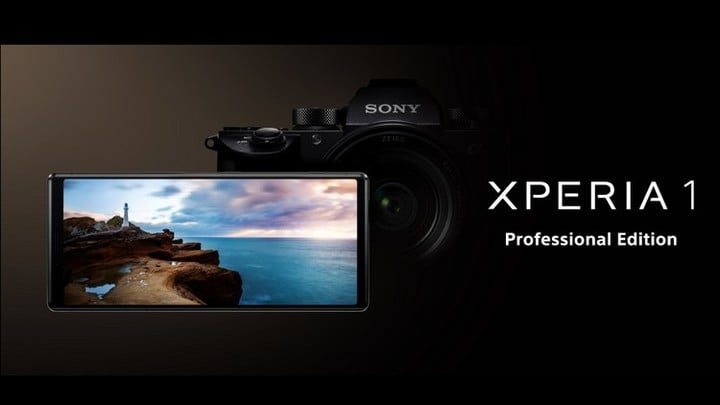
Not long ago, Xperia 1 and A7M3 connected to each other, turning the phone screen into a viewfinder. Now TVs will also be connected to mobile phones, building Sony’s own device ecosystem.
Of course, Sony also has its own plans in this area for the trend of “smart TV” in the current market..

▲ Kimura Weiren
Mimura Kimura tells me that Sony is now In addition to in addition to content cooperation with Tencent, there is also a partnership with Lifesmart (Yunqi, a Chinese smart home Brand) cooperation into the local IoT ecosystem in China.
From a strategic perspective, Sony will remain open-minded and may There will be more cooperative platforms or companies.
Prove strength with experience
In recent years, two major changes have taken place in the television industry. One is that Xiaomi, Huawei and other companies have entered the television market. Compete with traditional TV companies. The other is that the traditional TV industry has also upgraded and improved the picture and sound quality of its own products through independent solutions. For Sony, this year they will not only face competition with their sales volume, but also the development of new technologies Capabilities and applications.
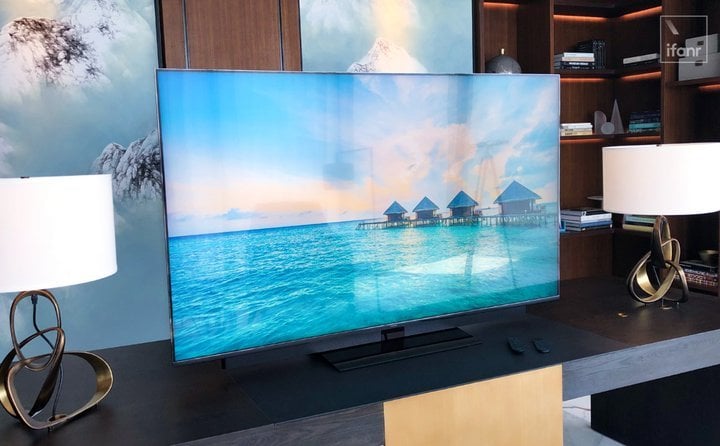
Talking about the impact on the Sony of the “Smart Screen” introduced by domestic companies last year, and their views on the name, Xie Yan said:
The issue of the name of the TV is not the focus for consumers, the focus is on consumption What does the person use it for.
So whether it is a traditional TV or a “smart screen”, it is actually the same for Sony. The key is to finally bring the user What they want. However, it is an inevitable trend for TVs to become more and more intelligent, so the use of mobile phones and TVs will be the focus of Sony’s next development.
We are now thinking more about how to seamlessly connect with mobile products, how Better cooperation with the local ecosystem is an important future direction for us in the Chinese market.
Of course, in the function of the TV, Sony still emphasizes picture quality and user experience, as mentioned earlier “Easy to use, easy to get started”, compared to other manufacturers, Sony still emphasizes the visual and audio experience of the TV.
Xie Yan added:
Sony is currently the only TV with a native system on the market. This is one of our strengths, not its weaknesses. This brings great system fluency, security, and excellent scalability to our consumer experience. At the same time, Sony established in China and Japan Technical team to study the needs and habits of local users.
In addition to new companies joining the LED LCD TV market through smart screens, Xiaomi is also OLED this month There are new moves on TV. In this regard, I also presented Sony’s views on Xiaomi’s move, and Takagi Ichiro said:
Sony welcomes Internet brands to join the OLED market, but at the same time we will continue to paint The quality, sound quality and image quality of the engine are constantly upgraded, which is different from similar products.

▲ Development history of Sony image quality chips
The reason why Sony has the confidence to differentiate itself from new and similar traditional companies is that they Yes Chip self-developed Basic and technical application capabilities. In response, Product Design Manager, Product Manager, Sony Home Entertainment and Audio Products Company Genzu Daisuke summarized in three points:
First of all, Sony has 20 years of history in image quality chip development and has extensive experience and technology. Secondly, Sony already has a unique set of algorithms that can optimize picture quality through technologies such as Octavia Dynamics. Finally, we have an AI image double database Can be combined with image algorithms to optimize the picture.
JaneSimply speaking, it is that Sony not only has hardware R & D capabilities, but also relatively mature technology application capabilities and software tuning capabilities. These three points constitute the competitiveness of Sony and similar competitors.
For the price war in the TV market in recent years, Xie said that Sony will not blindly pursue high prices. However, he also emphasized that Sony will not use price as a strategy to pursue sales, and for large-screen, high-quality, high-quality products, it will still maintain appropriate pricing to serve the target population.
8K has arrived, the content is peer
This year Sony announced the contents of several partners at the CES booth, except for its own Sony movies ( The booth is displayed as Movie “The Brave Game “) And games (the booth is displayed as” GT Racing “), there are also things like Netflix, Tencent Video, IMAX and Dolby 方 .
Sony introduced at the booth. Among these partners, Sony will provide the parameters to let the partners cooperate Optimized to bring the picture in front of the camera and the creator’s intention to the audience through Sony TV.

In the interview, we asked Kimura Weiren, who is in charge of product content, about Sony in the Chinese market Content cooperation, he replied:
We will soon have IMAX ENHANCED content available on Tencent’s platform Chinese consumers. And based on the current film source, we will gradually increase and expand our film source library.
In addition, Kimura Weiren also said that the TV department will also integrate the content of Sony Entertainment, The content advantage of TV is maximized.
Of course, a lot of content comes from Sony Pictures Entertainment.
Kimura added.
The next step for Sony TV
At the end of the interview, we asked several executives about the future development of Sony TV The plan, in general, is divided into three parts-company, product and market.
In fact, questions about the company originated from PS5, which was mentioned again at CES this year, and Game mode previously introduced by Sony TV for PlayStation. For Sony this year, will it continue to work with PS5 and PSVR advance ” TV + mutual entertainment “strategy, Takahashi Yang said:
This year’s new TV products have added special support for 120 frames and high refresh rate. Technology developed for gamers.
It can be seen that this year, the TV department will continue to cooperate with the game department to improve product linkage and competition through the combination of the host and the screen. Force.
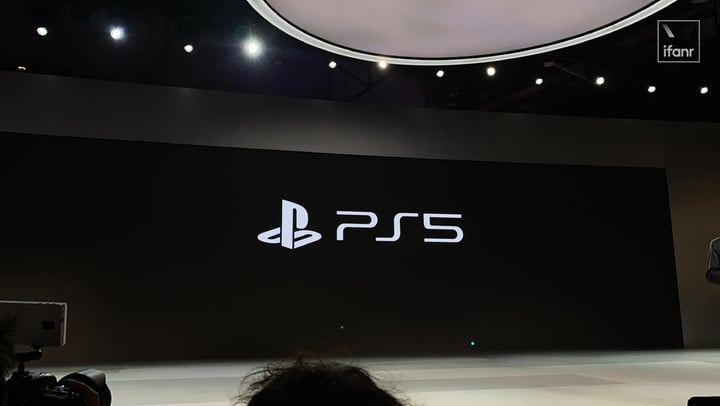
When talking about whether Sony will join Micro LED and Laser TV camp , Takagi Ichiro said:
Whether it is an LCD TV or an OLED TV, Sony believes that the maximum boundary of the screen is About 100 inches.
However, “100 inches” by Takagi Ichiro refers to the maximum size of LED and OLED TVs, and It does not mean that Sony will not develop TVs or display products larger than 100 inches in the future. Takagi Ichiro added:
If the display device in the future wants to break through the size, the current solution is The Micro LED TV you see, or laser TV, etc. Of course these Sony are also studying.
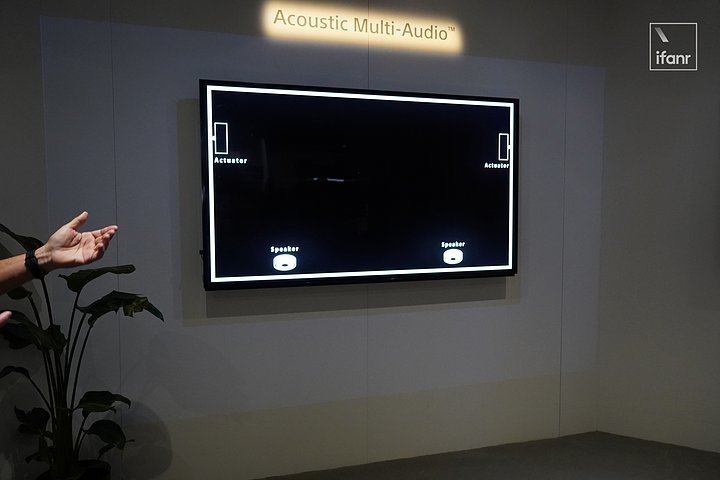
▲ Sony Z8H frame sound technology
However, Takagi Ichiro has always emphasized the performance of Sony TV in picture quality rather than radical innovation. It is resolution, color, and brightness that are all considered. Behind these three points is the development of image quality engines and display technologies.
Takagi Ichiro also mentioned “ sound and picture integration “, this is a new technology often mentioned by Sony in recent years, it is Sony Another performance that enhances the viewing experience is also one of the reasons why Sony controls the size of the TV.
If the screen gets bigger and bigger, The more important is the positioning of sound, so we will introduce technologies such as audio and video integration.
Finally, I will talk about whether Sony will launch sub-series and sub-brands to respond to different user groups. Current When the television market The tube did not respond directly.
However, they used a sentence to summarize the operating philosophy of Sony TV, which is actually their Response to this question:
As a sub-brand based on the circle, different companies will have different choices. For Sony, the most important thing is how the product can reflect the value of the product that the user needs.

Although both the Internet and the electronics manufacturing industry experienced market sales setbacks last year, under this market share, Sony TV sales are still ahead.
When asked about the sales situation, Takagi Ichiro did not release specific data, but used a sentence to summarize Sales last year:
It (sales) exceeded our expectations.
When it comes to product strategy by 2020, Takagi Ichiro showed us Sony TV This year’s product philosophy.

First of all, in terms of picture quality, Sony will continue to maintain it high-end, big screen route, based on this concept, Sony will use panel technology and decoding technology to maintain a better picture Qualitative performance.
This is followed by sound technology for OLED and LED TVs. In addition to the screen sound field previously applied to OLED TVs, this year Sony also adopted border generation technology on LED TVs. This technology can make TV sound field performance more three-dimensional and enhance the cinematic presence. At the same time, LED TVs have become slimmer.
Finally, in terms of user interaction, it is divided into three parts: easy to use, easy to use, and faster. , Users can avoid the trouble of using remote control through voice control; TV operation has become easier to use; product operation response has become faster.
Based on these ideas, we will launch 4 new series of products.
AI and IoT for Sony TV
In previous interviews, Sony didn’t mention much about AI and IoT, and emphasized more The picture quality and sound quality of the product. However, in this interview, Sony introduced us to the new direction of AI application on TV and later connection with other Sony products.
 On the one hand Sony focuses on how to use AI technology to improve the best paintings quality. On the other hand, Sony needs to use the Android system as the foundation and continue to use AI to promote the intelligence of TVs.
On the one hand Sony focuses on how to use AI technology to improve the best paintings quality. On the other hand, Sony needs to use the Android system as the foundation and continue to use AI to promote the intelligence of TVs.
For Takagi Ichiro, the next thing for Sony TV to do is to deal with Sony ’s own huge equipment The system is connected to realize the ecological combination of One Sony.

Not long ago, Xperia 1 and A7M3 connected to each other, turning the phone screen into a viewfinder. Now TVs will also be connected to mobile phones, building Sony’s own device ecosystem.
Of course, Sony also has its own plans in this area for the trend of “smart TV” in the current market..

▲ Kimura Weiren
Mimura Kimura tells me that Sony is now In addition to in addition to content cooperation with Tencent, there is also a partnership with Lifesmart (Yunqi, a Chinese smart home Brand) cooperation into the local IoT ecosystem in China.
From a strategic perspective, Sony will remain open-minded and may There will be more cooperative platforms or companies.
Prove strength with experience
In recent years, two major changes have taken place in the television industry. One is that Xiaomi, Huawei and other companies have entered the television market. Compete with traditional TV companies. The other is that the traditional TV industry has also upgraded and improved the picture and sound quality of its own products through independent solutions. For Sony, this year they will not only face competition with their sales volume, but also the development of new technologies Capabilities and applications.

Talking about the impact on the Sony of the “Smart Screen” introduced by domestic companies last year, and their views on the name, Xie Yan said:
The issue of the name of the TV is not the focus for consumers, the focus is on consumption What does the person use it for.
So whether it is a traditional TV or a “smart screen”, it is actually the same for Sony. The key is to finally bring the user What they want. However, it is an inevitable trend for TVs to become more and more intelligent, so the use of mobile phones and TVs will be the focus of Sony’s next development.
We are now thinking more about how to seamlessly connect with mobile products, how Better cooperation with the local ecosystem is an important future direction for us in the Chinese market.
Of course, in the function of the TV, Sony still emphasizes picture quality and user experience, as mentioned earlier “Easy to use, easy to get started”, compared to other manufacturers, Sony still emphasizes the visual and audio experience of the TV.
Xie Yan added:
Sony is currently the only TV with a native system on the market. This is one of our strengths, not its weaknesses. This brings great system fluency, security, and excellent scalability to our consumer experience. At the same time, Sony established in China and Japan Technical team to study the needs and habits of local users.
In addition to new companies joining the LED LCD TV market through smart screens, Xiaomi is also OLED this month There are new moves on TV. In this regard, I also presented Sony’s views on Xiaomi’s move, and Takagi Ichiro said:
Sony welcomes Internet brands to join the OLED market, but at the same time we will continue to paint The quality, sound quality and image quality of the engine are constantly upgraded, which is different from similar products.

▲ Development history of Sony image quality chips
The reason why Sony has the confidence to differentiate itself from new and similar traditional companies is that they Yes Chip self-developed Basic and technical application capabilities. In response, Product Design Manager, Product Manager, Sony Home Entertainment and Audio Products Company Genzu Daisuke summarized in three points:
First of all, Sony has 20 years of history in image quality chip development and has extensive experience and technology. Secondly, Sony already has a unique set of algorithms that can optimize picture quality through technologies such as Octavia Dynamics. Finally, we have an AI image double database Can be combined with image algorithms to optimize the picture.
JaneSimply speaking, it is that Sony not only has hardware R & D capabilities, but also relatively mature technology application capabilities and software tuning capabilities. These three points constitute the competitiveness of Sony and similar competitors.
For the price war in the TV market in recent years, Xie said that Sony will not blindly pursue high prices. However, he also emphasized that Sony will not use price as a strategy to pursue sales, and for large-screen, high-quality, high-quality products, it will still maintain appropriate pricing to serve the target population.
8K has arrived, the content is peer
This year Sony announced the contents of several partners at the CES booth, except for its own Sony movies ( The booth is displayed as Movie “The Brave Game “) And games (the booth is displayed as” GT Racing “), there are also things like Netflix, Tencent Video, IMAX and Dolby 方 .
Sony introduced at the booth. Among these partners, Sony will provide the parameters to let the partners cooperate Optimized to bring the picture in front of the camera and the creator’s intention to the audience through Sony TV.

In the interview, we asked Kimura Weiren, who is in charge of product content, about Sony in the Chinese market Content cooperation, he replied:
We will soon have IMAX ENHANCED content available on Tencent’s platform Chinese consumers. And based on the current film source, we will gradually increase and expand our film source library.
In addition, Kimura Weiren also said that the TV department will also integrate the content of Sony Entertainment, The content advantage of TV is maximized.
Of course, a lot of content comes from Sony Pictures Entertainment.
Kimura added.
The next step for Sony TV
At the end of the interview, we asked several executives about the future development of Sony TV The plan, in general, is divided into three parts-company, product and market.
In fact, questions about the company originated from PS5, which was mentioned again at CES this year, and Game mode previously introduced by Sony TV for PlayStation. For Sony this year, will it continue to work with PS5 and PSVR advance ” TV + mutual entertainment “strategy, Takahashi Yang said:
This year’s new TV products have added special support for 120 frames and high refresh rate. Technology developed for gamers.
It can be seen that this year, the TV department will continue to cooperate with the game department to improve product linkage and competition through the combination of the host and the screen. Force.

When talking about whether Sony will join Micro LED and Laser TV camp , Takagi Ichiro said:
Whether it is an LCD TV or an OLED TV, Sony believes that the maximum boundary of the screen is About 100 inches.
However, “100 inches” by Takagi Ichiro refers to the maximum size of LED and OLED TVs, and It does not mean that Sony will not develop TVs or display products larger than 100 inches in the future. Takagi Ichiro added:
If the display device in the future wants to break through the size, the current solution is The Micro LED TV you see, or laser TV, etc. Of course these Sony are also studying.

▲ Sony Z8H frame sound technology
However, Takagi Ichiro has always emphasized the performance of Sony TV in picture quality rather than radical innovation. It is resolution, color, and brightness that are all considered. Behind these three points is the development of image quality engines and display technologies.
Takagi Ichiro also mentioned “ sound and picture integration “, this is a new technology often mentioned by Sony in recent years, it is Sony Another performance that enhances the viewing experience is also one of the reasons why Sony controls the size of the TV.
If the screen gets bigger and bigger, The more important is the positioning of sound, so we will introduce technologies such as audio and video integration.
Finally, I will talk about whether Sony will launch sub-series and sub-brands to respond to different user groups. Current When the television market The tube did not respond directly.
However, they used a sentence to summarize the operating philosophy of Sony TV, which is actually their Response to this question:
As a sub-brand based on the circle, different companies will have different choices. For Sony, the most important thing is how the product can reflect the value of the product that the user needs.